Here’s 12 Edible Flowers You Can Grow For Culinary Use In A Kitchen Garden

Reviewed By COLIN SKELLY

Colin is a Horticulturist and Horticultural Consultant with experience in a range of practical and managerial roles across heritage, commercial and public horticulture. He holds the Royal Horticultural Society’s Master of Horticulture award and has a particular interest in horticultural ecology and naturalistic planting for habitat and climate resilience.
We grow flowering plants for beauty and fruiting ones for edibility, but some flowers are lovely to look at and are also a treat to eat.
We have chosen twelve flowers that are not merely edible but are palatable, selecting them for a wide range of tastes and purposes, from mild flavours to use as delicate garnishes to strong ones to use in savoury foods.
1) Pot Marigold

- BOTANICAL NAME: Calendula officinalis
- HARDINESS RATING: H5
- FOLIAGE TYPE: Deciduous
- FLOWERS: Orange
- FLOWERING SEASON(S): Summer / Autumn
No other flower was more associated with culinary use in Mediaeval Europe than ‘Pot Marigold’ or the ‘Poor Man’s Saffron’.1Demas, A. (2022, September 1). Celebrating Edible Flowers. The Food Studies Institute. Retrieved March 15, 2023, from https://foodstudies.org/celebrating-edible-flowers/
The flower has a buttery yellow to golden orange colour and is also used as a food colouring and a dye.
It is often considered a saffron substitute and the plant’s leaves are also edible.
Calendulas are pretty but plain flowers that resemble daisies more than their namesake.
It is best used in not-so-strong savoury dishes including soups, pot stews, casseroles, pizza, and quiche.2Rao, T. (2010, July 19). Marigolds: They’re What’s for Dinner. The Atlantic. Retrieved March 15, 2023, from https://www.theatlantic.com/health/archive/2010/07/marigolds-theyre-whats-for-dinner/59940/
Indeed, pot marigolds can be used as an ingredient in cooked foods or be added later to infuse some flavour and add some warm orange colour.
2) French Marigold
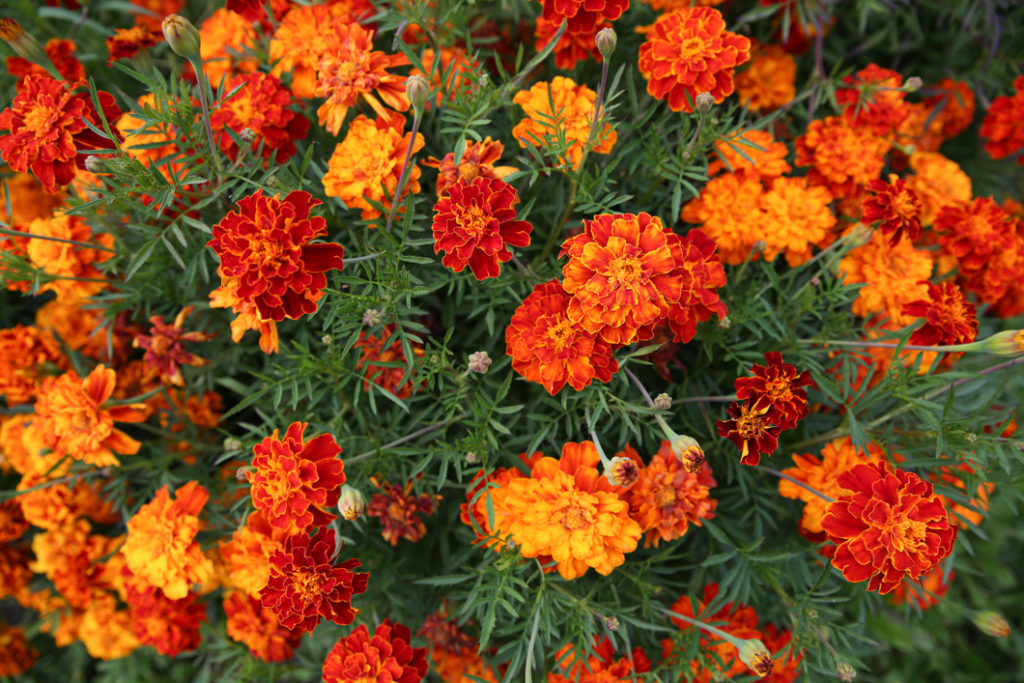
- BOTANICAL NAME: Tagetes patula
- HARDINESS RATING: H2
- FOLIAGE TYPE: Deciduous
- FLOWERS: Orange, yellow, red and brown
- FLOWERING SEASON(S): Summer / Autumn
French marigold is another variety of marigold that has edible uses.
Native to a swath of land from Mexico to Colombia, it is best for tossing in green salads and veggie salads and lending colour and flavour to various soups.
Tagetes patula’s petals have a moderately spicy, moderately pungent flavour, and the dried powder made from them is a ubiquitous ingredient in some cuisines of the Caucasus.
3) Rose
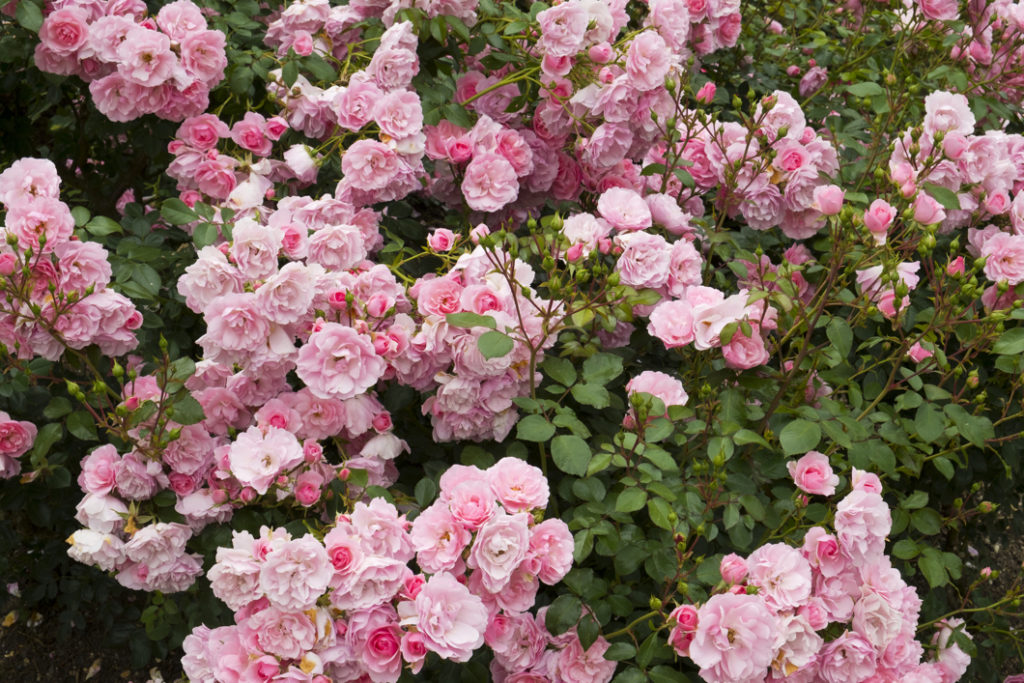
- BOTANICAL NAME: Rosa
- HARDINESS RATING: H7 (varies with cultivar)
- FOLIAGE TYPE: Deciduous
- FLOWERS: Varied
- FLOWERING SEASON(S): Summer / Autumn (varies by cultivar)
As much as the rose is considered to be the paragon of floral beauty, it is, in fact, a flower that is not only edible but also full of flavour.
No matter which type of rose you grow and enjoy, do remove and discard the lower whitish, slightly tougher, part of the petals.
Though the different species of rose all have their own particular fragrance and flavour, one word easily describes them all: sweet.
The buds are best for making jams and preserves and the petals are often mixed into honey and sweetmeats.3Hegde, A. S., Gupta, S., Sharma, S., Srivatsan, V., & Kumari, P. (2022). Edible rose flowers: A doorway to gastronomic and nutraceutical research. Food Research International, 162, 111977. https://doi.org/10.1016/j.foodres.2022.111977
The petals can also be decocted into syrups, liqueurs, and, above all, rose water.
4) Garden Nasturtium

- BOTANICAL NAME: Tropaeolum majus
- HARDINESS RATING: H3
- FOLIAGE TYPE: Deciduous
- FLOWERS: Orange, red and yellow
- FLOWERING SEASON(S): Summer / Autumn
Garden nasturtium may well be the flower most commonly thought of and cultivated as an edible flower in the United Kingdom.
In fact, besides the flower, the leaves, stems and even the seed pods are edible.4Nasturtium Pods. (n.d.). Specialty Produce. Retrieved March 15, 2023, from https://specialtyproduce.com/produce/Nasturtium_Pods_7023.php
Garden nasturtium flowers are probably most commonly used for imparting colour and a bit of zing to hearty salads but they can also be stirred into soups, casseroles, stir-fries and savoury dishes to impart a little pepperiness.5Lambert, R. (2020, June 29). How to make capers from nasturtium seeds. Wild Walks Southwest. Retrieved March 15, 2023, from https://www.wildwalks-southwest.co.uk/make-capers-from-nasturtium-seeds/
5) Dandelion
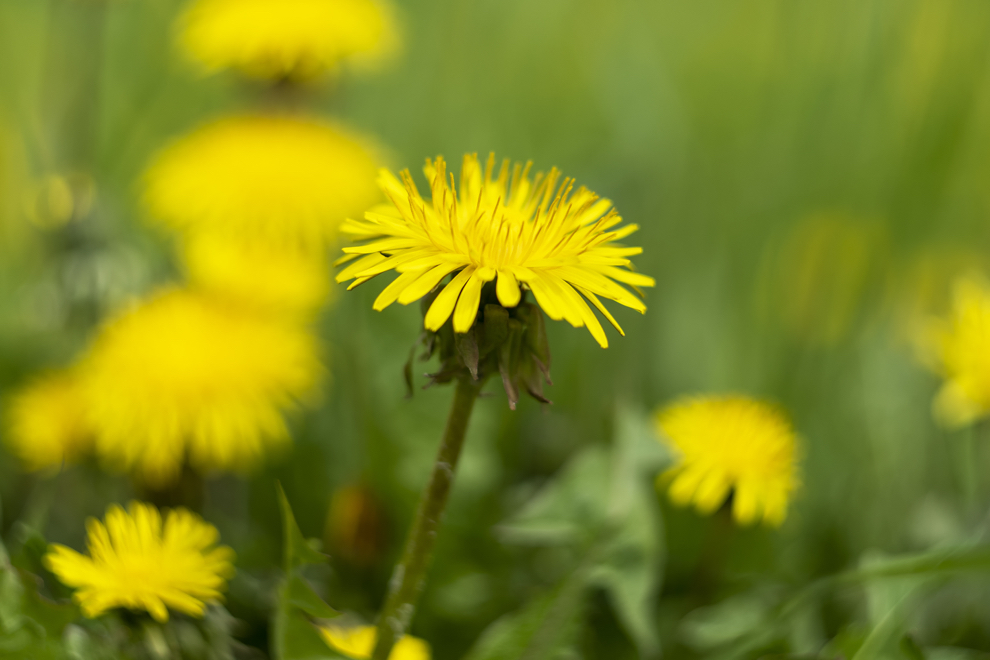
- BOTANICAL NAME: Taraxacum officinale
- HARDINESS RATING: H7
- FOLIAGE TYPE: Evergreen
- FLOWERS: Yellow
- FLOWERING SEASON(S): Summer
Dandelion leaves have been eaten throughout Europe for centuries and can be used in the kitchen as a leafy green or even as a base, as they impart a somewhat heavyish, earthy, vegetal taste to cooked foods.
“I started growing dandelions when we had a few guinea pigs to feed, but I kept growing them because the leaves are great in salads alongside their young flowers,” shares Colin Skelly, a Horticultural Consultant.
“There are some cultivated forms available, such as ‘Pissenlit A Coeur plein’ (Full heart dandelion) selected for culinary use.”
However, this article is about flowers and while the flowers couldn’t taste more different from the leaves, they too have been used since time untold for a very special purpose – dandelion wine.6Wright, J. (2012, August 14). How to make dandelion wine. The Guardian. Retrieved March 15, 2023, from https://www.theguardian.com/lifeandstyle/wordofmouth/2012/apr/04/how-to-make-dandelion-wine
Dandelion and Burdock is a soft drink that is also still going strong after a century or so.
Flowers must be picked young, as when they mature they become progressively less sweet and more bitter.
6) Japanese Honeysuckle
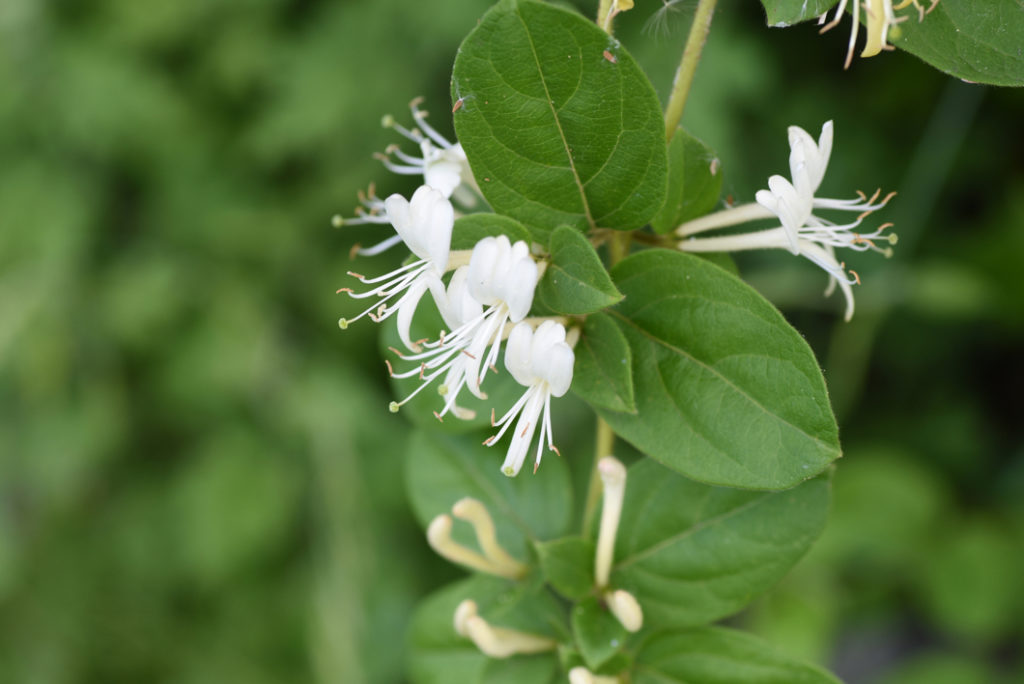
- BOTANICAL NAME: Lonicera japonica
- HARDINESS RATING: H5
- FOLIAGE TYPE: Evergreen / Semi-evergreen
- FLOWERS: White, purple and yellow
- FLOWERING SEASON(S): Spring / Summer
If you want to grow a plant that is as ornamental as it is edible and you have a sweet tooth, you’ve won the lottery with Japanese Honeysuckle, a hardy evergreen climber.
Where this plant is concerned, the vast majority of cultivars are not only edible but also flavourful besides being, of course, decorative.
Be aware that most other types of honeysuckle species’ flowers are not edible; I recommend that only Lonicera japonica and its cultivars be treated as plants with edible flowers.
You can use Japanese Honeysuckle flowers for all things sweet, and they are great for making syrups, jellies, and jams.
They impart a gently and fragrantly sweet, distinctly honey-ish, flavour to anything they are added to, with the source of the flavour mainly being the nectar inside the flowers.
7) Carnation
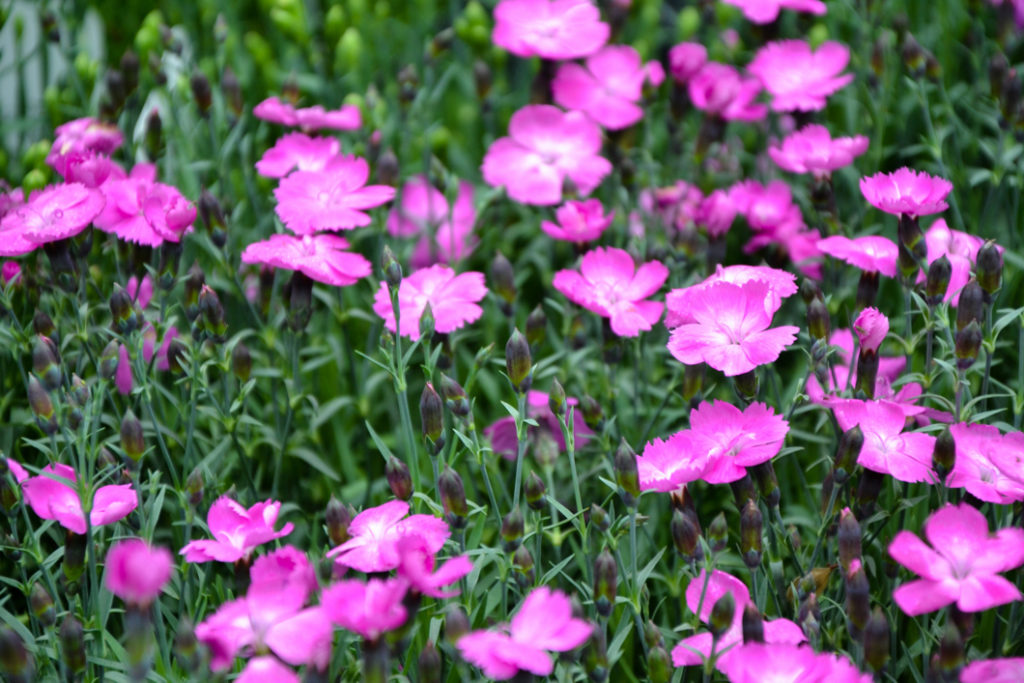
- BOTANICAL NAME: Dianthus caryophyllus
- HARDINESS RATING: H4
- FOLIAGE TYPE: Evergreen
- FLOWERS: Pink and purple
- FLOWERING SEASON(S): Summer
Carnations are not only among the most refined and delicate ornamental flowers, they are edible and flavourful provided you grow an edible species and not a cultivar developed for floriculture.
They are gently fragrant, with a sweet, often clove-like, centre, sometimes with notes or an aftertaste of allspice.7Carnation Edible Flowers. (n.d.). Nurtured in Norfolk. Retrieved March 15, 2023, from https://nurturedinnorfolk.co.uk/product/carnation-edible-flowers/
In general the lighter-coloured the flower, the milder and gentler the flavour; the darker the flower, the sharper and more intense the flavour.
Only the petals are edible and the whitish base of each petal must be removed as it is bitter.
8) Florist’s Daisy
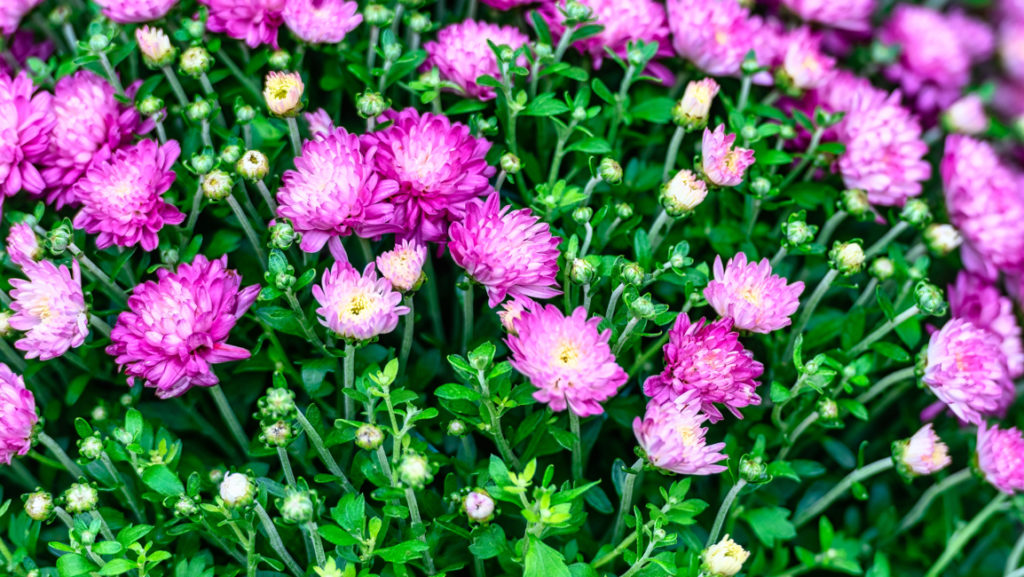
- BOTANICAL NAME: Chrysanthemum x morifolium
- HARDINESS RATING: H7
- FOLIAGE TYPE: Deciduous
- FLOWERS: Brown, pink, yellow
- FLOWERING SEASON(S): Autumn
The vast majority of chrysanthemum species’ flowers are edible, though they are not necessarily palatable.
The first species on this list that produces excellent-tasting flowers is C. x morifolium, better known as the florist’s daisy.
For any given chrysanthemum plant, the earlier a flower is picked, the more the flavour is milder and more inclined toward vegetal and sweet.
The later it is picked, the more intense the flavour, and the more peppery and bitter taste.
Thus, the particular chrysanthemum plant you go to and when you pick its flowers should be governed by how you intend to consume them.
A good rule is to pick the flower just when the bud is opening; when picked young the flower is gently flavourful and less bitter.
9) Indian Chrysanthemum
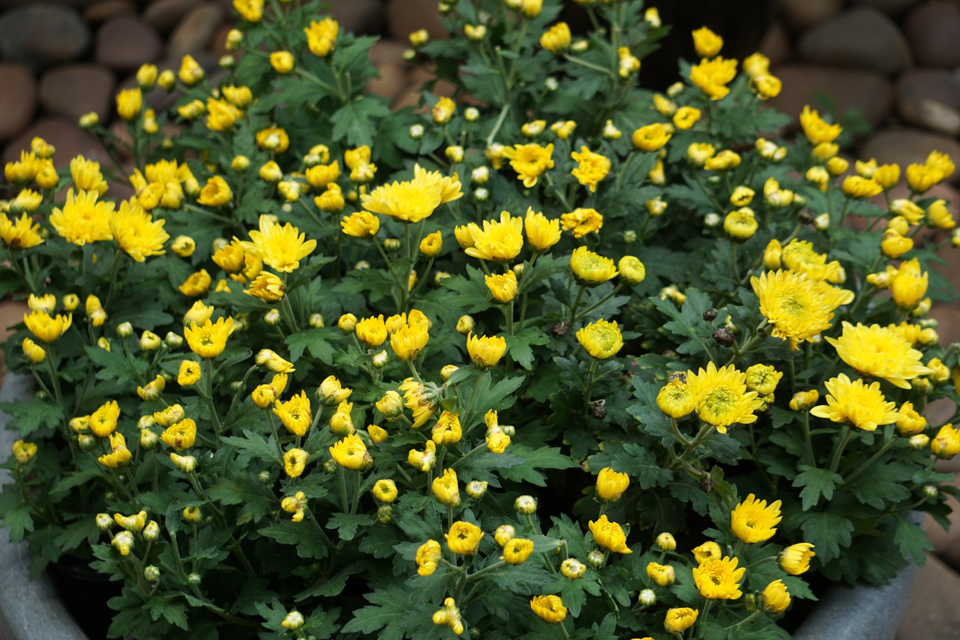
- BOTANICAL NAME: Chrysanthemum indicum
- HARDINESS RATING: H7
- FOLIAGE TYPE: Deciduous
- FLOWERS: Yellow
- FLOWERING SEASON(S): Summer / Autumn
The Indian chrysanthemum also has palatable flowers.
To use chrysanthemums in cooking, it’s best to look at Far Eastern cuisine and recipes.8Roe, U. (n.d.). Cooking with edible flowers – a history. Love Food. Retrieved March 15, 2023, from https://www.lovefood.com/news/58796/cooking-with-edible-flowers–a-history
However, they are a brilliant addition to any and many cooked vegetable dishes that include bok-choy, cabbage, kale, spinach, cress, radish, cauliflower, and french-beans.
Most stir-fries or veggie stews will be improved with an addition of chrysanthemum petals.
10) Heart’s Ease
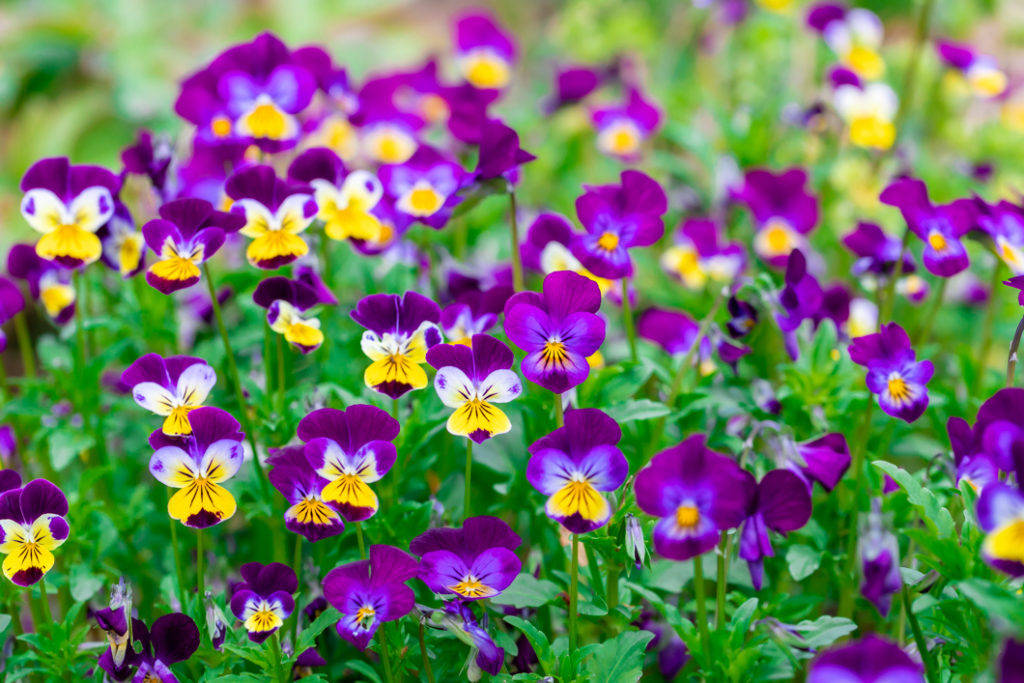
- BOTANICAL NAME: Viola tricolour
- HARDINESS RATING: H7
- FOLIAGE TYPE: Evergreen
- FLOWERS: Yellow, purple and cream
- FLOWERING SEASON(S): Spring / Summer / Autumn
We know that beautiful pansies come in a staggering range of hues and tones.
This variation may not quite be matched by the tastes and flavours of these gently palatable little flowers, but there is still a mild difference between varieties.
Viola tricolour has more intense flavours than the garden pansy that also features on this list.
They have a vegetal and grassy gentle taste though they are most often considered to have a wintergreen-like aroma and taste with a pleasing tartness.
Pansy petals, chopped or whole, can be dropped and tossed in green salads, fruit salads and vegetable salads.
However, they are just as good for garnishing fruit juices, fruit shakes, and even cocktails and mixed drinks.
11) Garden Pansy
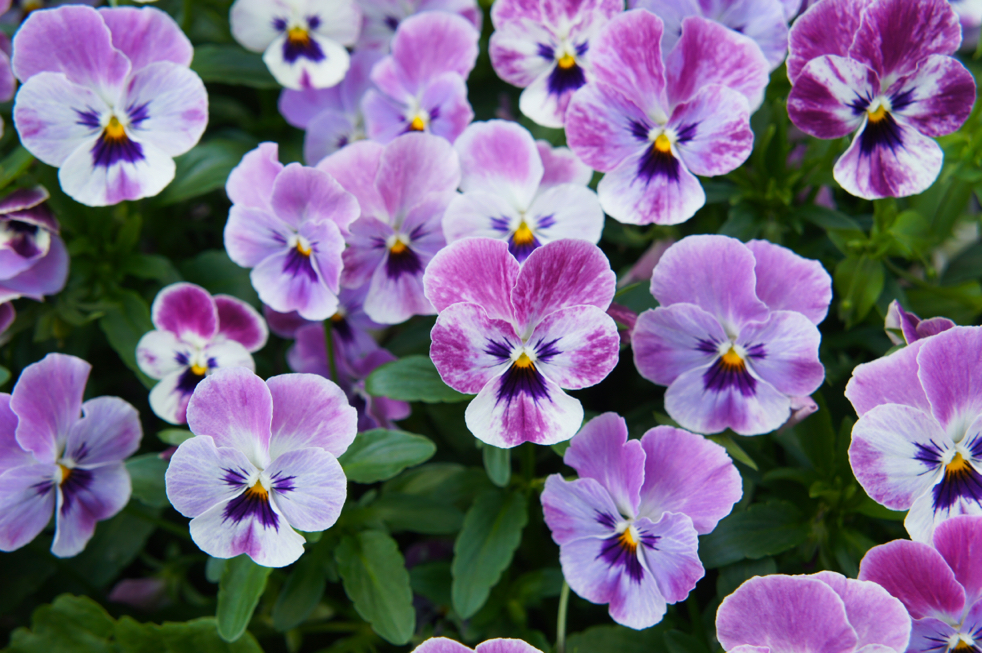
- BOTANICAL NAME: Viola × wittrockiana
- HARDINESS RATING: H5/H6
- FOLIAGE TYPE: Deciduous
- FLOWERS: Varies
- FLOWERING SEASON(S): Varies
Garden pansies almost always have gentle and mild aromas and flavours of freshly vegetal types hovering between grassy and floral, sometimes leaving a sweet aftertaste.
Only the petals may be eaten and not the whole flower, which also applies to the V. tricolour.
Pansy petals are ideal for decorating pastries, cakes, desserts and sorbets with.
12) Cornflower
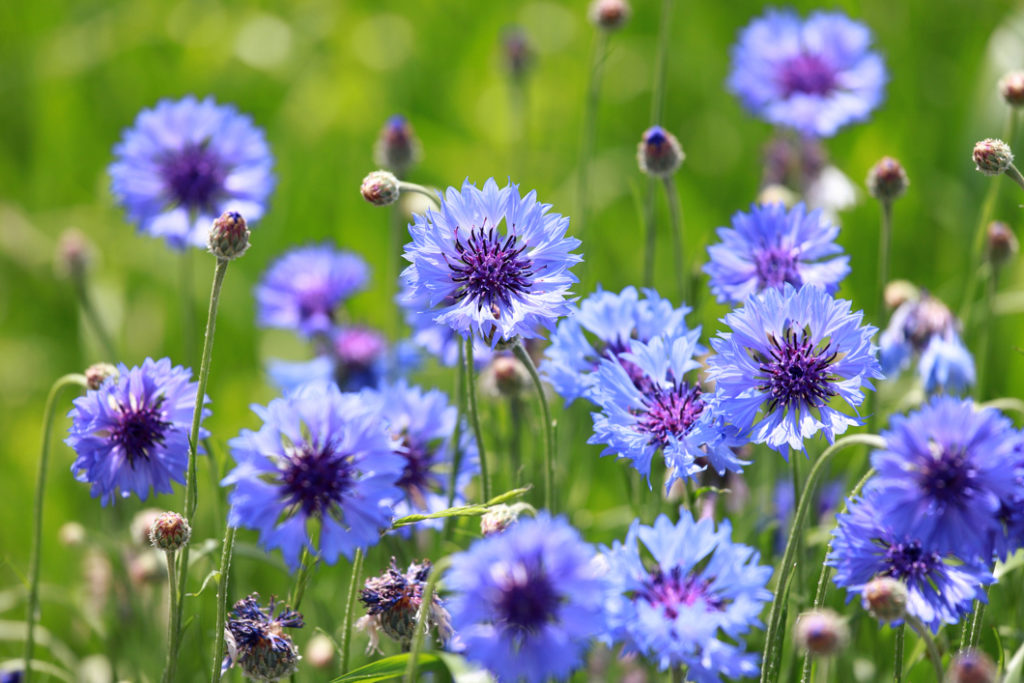
- BOTANICAL NAME: Centaurea cyanus
- HARDINESS RATING: H6
- FOLIAGE TYPE: Deciduous
- FLOWERS: Blue
- FLOWERING SEASON(S): Spring / Summer
Cornflower is not exactly a taste sensation, but it slots into our last spot because it is an all-rounder among edible flowers.
Taste-wise, cornflower is mild with a light flavour that seems to vary from sweetish to vegetal, to clove-ish to slightly spicy.
Cornflower petals can be used in cooked foodstuffs but that is not the best use for this flower in view of its size, flavour, and colour.
Its smallish size and the typical intense blue hue makes it a highly attractive garnish.
Though cornflowers come in other colours like white and pink, it is the intense blue flower that is most desirable.
Petals can simply be dropped over sweet foodstuffs, particularly all kinds of desserts from custards and puddings to parfaits and ice cream.
How To Prepare Edible Flowers
Avoid eating any flowers bought from a florist or anywhere else except those from a farmer’s market that are expressly designated for eating (besides those grown specifically for eating in your own garden).
Do not use any chemical pesticides; use only biological controls and natural, organic treatments such as those meant for herbs and vegetables.
In all cases, for edible flowers try to use own-root plants and not grafted ones.
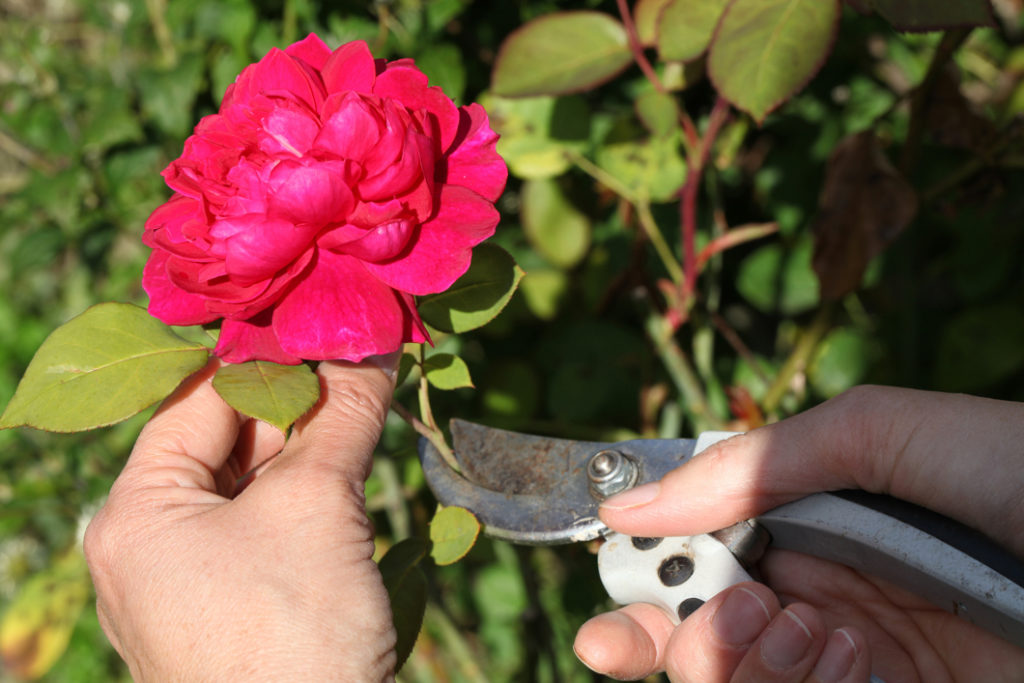
Pick flowers on the day you intend to use them unless you plan to dry them for making decoctions, tea or powders.
At most, keep them for a day in the fridge.
Keep in mind that not all flowers can be eaten whole – only the petals of many flowers are edible (and tasty) while much of the rest of the plant must be discarded.
Flowers should be washed before being used as a culinary ingredient or consumed.
Wash them in running water or dip them in a bowl of water.
References
- 1Demas, A. (2022, September 1). Celebrating Edible Flowers. The Food Studies Institute. Retrieved March 15, 2023, from https://foodstudies.org/celebrating-edible-flowers/
- 2Rao, T. (2010, July 19). Marigolds: They’re What’s for Dinner. The Atlantic. Retrieved March 15, 2023, from https://www.theatlantic.com/health/archive/2010/07/marigolds-theyre-whats-for-dinner/59940/
- 3Hegde, A. S., Gupta, S., Sharma, S., Srivatsan, V., & Kumari, P. (2022). Edible rose flowers: A doorway to gastronomic and nutraceutical research. Food Research International, 162, 111977. https://doi.org/10.1016/j.foodres.2022.111977
- 4Nasturtium Pods. (n.d.). Specialty Produce. Retrieved March 15, 2023, from https://specialtyproduce.com/produce/Nasturtium_Pods_7023.php
- 5Lambert, R. (2020, June 29). How to make capers from nasturtium seeds. Wild Walks Southwest. Retrieved March 15, 2023, from https://www.wildwalks-southwest.co.uk/make-capers-from-nasturtium-seeds/
- 6Wright, J. (2012, August 14). How to make dandelion wine. The Guardian. Retrieved March 15, 2023, from https://www.theguardian.com/lifeandstyle/wordofmouth/2012/apr/04/how-to-make-dandelion-wine
- 7Carnation Edible Flowers. (n.d.). Nurtured in Norfolk. Retrieved March 15, 2023, from https://nurturedinnorfolk.co.uk/product/carnation-edible-flowers/
- 8Roe, U. (n.d.). Cooking with edible flowers – a history. Love Food. Retrieved March 15, 2023, from https://www.lovefood.com/news/58796/cooking-with-edible-flowers–a-history

